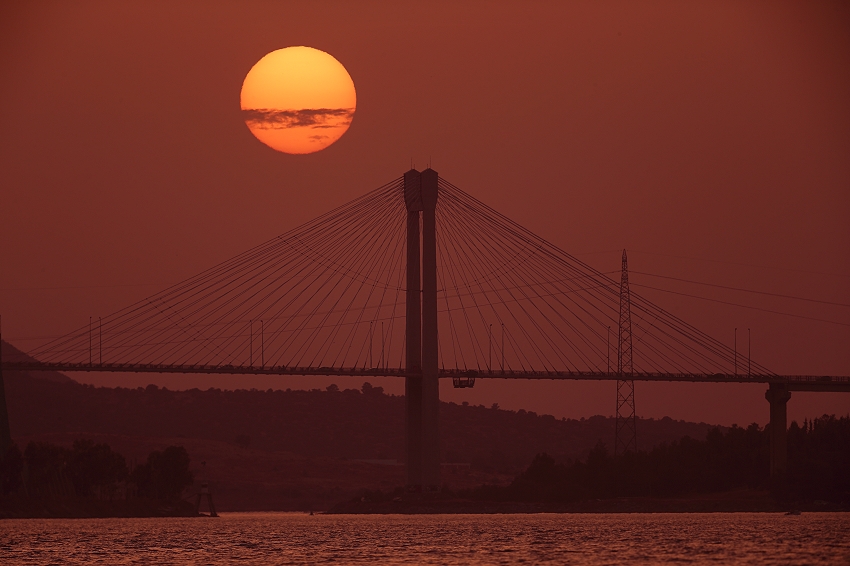
Our sun and closest star is believed to be approximately 4600 million years old and is composed (by mass) of hydrogen (74.5%), helium (23.5%)
and various other heavier elements (2%) such as oxygen and carbon. Due to this gaseous state, the sun does not rotate about its axis at one
uniform rate but has the poles rotating at a slower rate than the equatorial region. It has a central temperature of 14 million degrees
whereas the surface temperature is a mere 5500 °C. With a diameter of 1.4 million km, it is about 109 times as wide as Earth whereas with a
mass of 2 x 1030 kg, it is 335,000 times more massive than Earth. Of interest is the observation that its density of 1400
kg/m3 is only slightly more dense than water (1000 kg/m3).
Although the rising sun may seem to occur at approximately the same azimuth when observed from day to day, a longer term observational
project
will reveal this to be far from the truth. In fact, if we were to mentally note the azimuth of the rising sun around summer solstice in June
and repeat this exercise around winter solstice in December, we will note that the sun has shifted by approximately 65° during the intervening
six months!
This "moving target" involving the rising (or setting) sun is due to the elliptical nature of our planet's orbit around the sun which is
responsible for the variable arrival of the sun on the local meridian by up to 16 minutes early or late and the "Equation of Time" which is
described and documented elsewhere on this site along with the variable altitude due to
earth's tilt in its axis of rotation (23.45°) relative to its orbital plane.
Note: The image below is an extension of a prolonged effort to capture the rising full moon and Sun against notable
foregrounds. The primary task in such an exercise is to very precisely reverse engineer the perspective of the foreground of interest with respect
to its physical azimuth and altitude from my shooting location approximately 3110 meters southeast of the new suspension bridge at Chalkida. Such
a distance was both desireable and ideal so as to have a greater balance between the apparent size of the suspension bridge in the foreground and
Sol in the background and as indicated by the image below.
The stunning new bridge at Chalikda was constructed during the 1980's and 1990's and was made available to the
public in July/1993. It spans the Strait of Euripos by joining mainland Greece with Chalkida, the capital city of Greece's
second largest island, namely Euvoia. With a length of 694.5 meters and a width of 12.6 meters, the suspension bridge stands 34.5 meters above the
waters of the strait immediately below while the two main pylons reach a further 28 meters below the water surface. The bridge is accessible to both
automobiles and pedestrians owing to the presence of a driving lane and protected walkway in each direction.
Note: For additional photos of the sun and/or full moon against other well-known Greek archaeological grounds and
sites, please click here.
|
Body: Sun Mass: 332,900 x Earth Mean Eq Diameter: 109.1 x Earth R.A / Dec: 05h 38m 20s / 23° 20' 23" Distance: 152 million km Diameter: 31.49 ' Magnitude: -26.8 |
 |
Date: June 20, 2016 20:39 UT+3 Location: Nea Lampsakou, Euvoia, Greece Equipment: Takahashi FSQ-106/f5 Canon EOS 6D Baader BCF2 Filter Baader UV/IR-Cut Filter Exposure: 1 x 1/500 sec ISO 100 RAW Image Format 5472x3648 Image Size Custom White Balance Manual Mode Continuous Servo Mode Software: Digital Photo Pro V2.1.1.4 Photoshop CS5 Processing: RAW to TIFF (16-bit) conv Resampling JPG Compression |